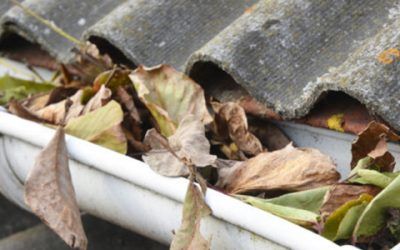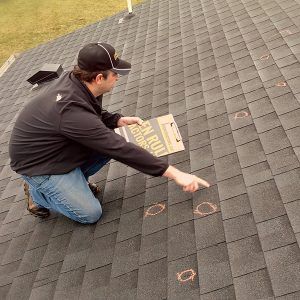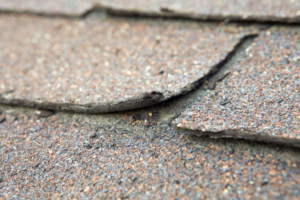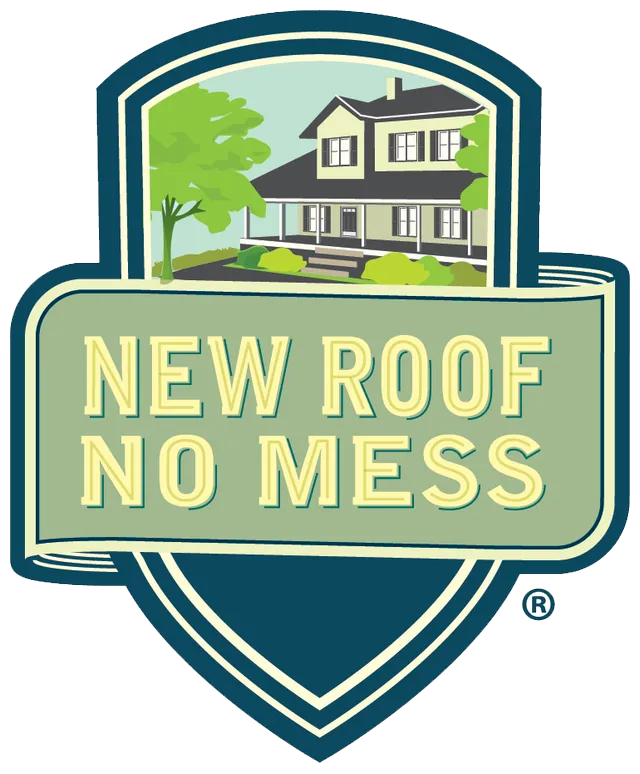Do I Have a Hail Damaged Roof?
Generally, hail must be 1¼ inches in diameter (Half-Dollar size) before it causes damage to heavy composite shingles or wood shake shingles. Lightweight composite shingles may show damage after being struck by 1-inch diameter (Quarter size) hail. Only deteriorated composite shingles will show hail damage due to hail less than 1 inch in diameter, and the hail generally must be more than ¾ inch in diameter (Dime size).
If your area has received hail large enough to possibly cause damage to your roof, you may want to examine other objects at ground level before calling your insurance company or pulling out your ladder. Hail strong enough to damage a roof will also cause damage to nearby cars, wood fences, shutters and/or exterior siding. Also, a significant amount of shingle granules appearing at the end of downspouts may indicate potential damage; however, granule loss, in and of itself, does not prove hail damage.
An inspection of the roof can reveal other causes that could have led to damage.
There are certain types of damage to consider before assuming you have hail damage:
Embrittlement/Hardening
Each composite shingle has four layers: a mat composed of glass fibers or organic materials; asphalt; a filler made of sand and limestone; and granules made of crushed stone with a ceramic coating. When the shingle is exposed to the weather, the asphalt will deteriorate and shrink. The shingle will harden, become brittle and may demonstrate one or more of the following phenomena:
Cupped or Curled Edges
As the outer edges of the shingle shrink at a faster rate than the interior of the shingle, the edges tend to curl up or down.
Craze Cracks
These are hairline cracks that appear in a random pattern throughout the shingle.
Horizontal, Vertical or Diagonal Cracks
(Also known as Splitting) Caused by asphalt shrinking at opposite ends of the shingle. As these ends shrink, the middle of the shingle pulls apart, leaving a crack (split).
Splices
Occasionally, a shingle is created at the place where one end of a roll of mat ends and the new roll begins. The splicing together of these rolls leaves a double thickness of mat that does not allow the remaining layers of the shingle to be properly formed.
Blisters
Heat causes the asphalt to release gases, which sometimes are trapped by the surrounding layers. The resulting blisters can then “pop,” and leave pockmarks in the shingle. A blister does not have the characteristic “bruise” that can be felt in a shingle that was struck by a hailstone.
Discolored Streaks or Patches
Lichens or algae can grow on shingles in most weather conditions. The colors usually seen are green, brown, orange, gray, or a mixture of those colors.
Diagonal Pattern of Deterioration
If you see a diagonal pattern of shingle deterioration or color gradation appearing across three tabs of shingles, it generally is a result of a manufacturer’s defect in the shingle. The diagonal pattern shows up as a result of the pattern that was used by the roofer when installing that batch of shingles on your roof.
Rounded or Horseshoe Shaped Areas
These areas, where the granules are compressed into the coating asphalt, and the granules themselves appear to have been crushed to a powder, are caused by hammer damage. Such damage usually occurs near ridges.
Hail damage will result in a random pattern of strike marks in various sizes. If you can see a pattern to the damage, it was not caused by a random phenomenon like hail. In addition, hailstones will leave a “bruise” in the mat, which your fingers can usually detect in and around the crater.
If, after surveying the damage, you believe you have a hail claim, call your insurance company or agent. An adjuster will be sent out to consider the nature and extent of the damage. Depending upon the circumstances, the adjuster may or may not require your physical presence to review the damage. Therefore, you may wish to prepare a written list of items which also appear to be damaged (i.e., windows, shutters, siding, fascia, ceilings, satellite dishes, etc.) for the adjuster’s consideration.
You are responsible for taking any steps necessary to prevent further damage to your property after the hailstorm. If the necessary repairs must be done before the adjuster can personally inspect the damage, videotape or take good quality photographs of the damage. Retain damaged items such as carpet or furniture for the adjuster to examine before discarding them.
If you have not already done so, find your insurance policy and become familiar with it. You may find that you have additional coverage you had forgotten about. Make sure you also are aware of what the policy requires you to do. And, double-check the policy’s exclusions, so you will know what is not covered by your policy.
In addition, if you have personal property to be replaced, try to find as many receipts as you can, in order to determine how much you paid for those items.
After inspecting the damage, the adjuster will prepare an estimate of the cost to repair your roof. Depending upon the nature and extent of damage, your adjuster may recommend repair or replacement. In addition, the adjuster will calculate the Actual Cash Value (ACV) of your roof immediately prior to the hailstorm. If your roof was worth 75% of the value of a new roof, you will be entitled to 75% of the estimated cost to repair or replace the damaged area. Your deductible will also be taken off of the estimated ACV amount.
In addition, check your policy’s deductible. Some companies charge a higher deductible for wind and hail damage than for damage caused by other perils. If you believe repairs to your roof will cost less than the amount of your deductible, you may not want to file a claim. Some insurance companies will consider occurrences of wind and hail damage, even if no money was paid out, when they review whether to renew your policy.
If, after obtaining estimates from roofing companies, you find the adjuster’s estimate lower than the roofers’ estimates, let your adjuster know. There may be differences in materials or damage that he or she can explain or resolve for you.
If your policy provides replacement coverage, the insurance company may pay you the difference between the ACV estimate and the cost to repair or replace the damaged area or items after the designated repairs have been made. However, you must make these repairs within a specific amount of time, usually 180 days. Your policy will specify any such time requirements.
If, after working with your adjuster and insurance company, you believe they have not lived up to the provisions in your insurance policy, you can file a complaint with the Nebraska department of Insurance.
For more information about the different types of hail damage or what to do when you find it, don’t hesitate to give Golden Rule Contractors a call at 402-641-2214!
RECENT POSTS







